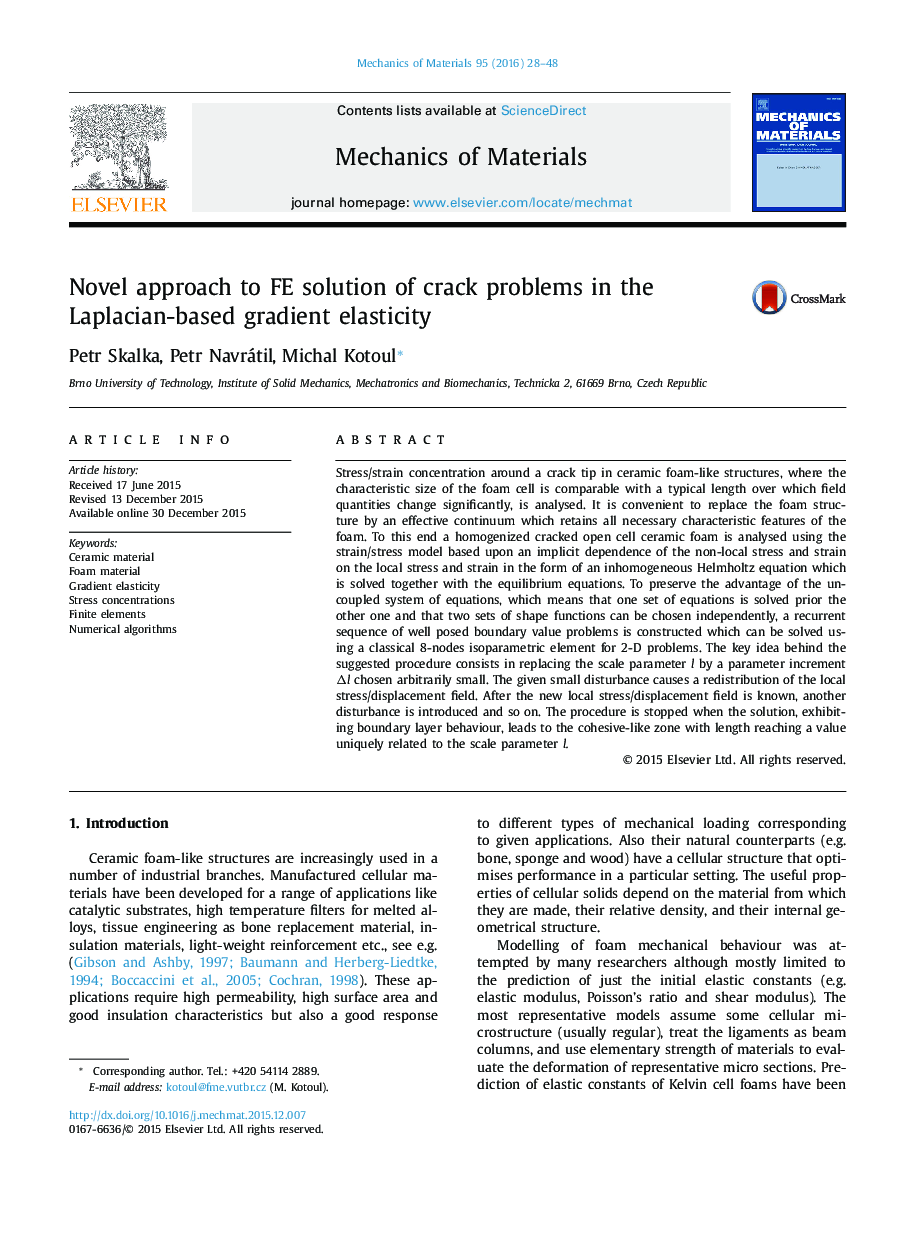| کد مقاله | کد نشریه | سال انتشار | مقاله انگلیسی | نسخه تمام متن |
|---|---|---|---|---|
| 800085 | 1467444 | 2016 | 21 صفحه PDF | دانلود رایگان |

• A novel approach to FE solution of crack problems in the Laplacian-based gradient elasticity.
• The Eringen theory was used, which possesses very similar format as the Aifantis theory, i.e. two sets of second-order differential equations which are however coupled.
• A special iteration procedure allows transforming the system to uncoupled formulation, ensures the satisfaction of higher order natural boundary conditions closely behind the crack tip and predicts cusp-like closure of the crack.
• The iteration procedure is based on a sequence of small scale parameter increments which results in a sequence of boundary value problems.
• The approach is applied to modelling of homogenized cracked open cell ceramic foams.
Stress/strain concentration around a crack tip in ceramic foam-like structures, where the characteristic size of the foam cell is comparable with a typical length over which field quantities change significantly, is analysed. It is convenient to replace the foam structure by an effective continuum which retains all necessary characteristic features of the foam. To this end a homogenized cracked open cell ceramic foam is analysed using the strain/stress model based upon an implicit dependence of the non-local stress and strain on the local stress and strain in the form of an inhomogeneous Helmholtz equation which is solved together with the equilibrium equations. To preserve the advantage of the uncoupled system of equations, which means that one set of equations is solved prior the other one and that two sets of shape functions can be chosen independently, a recurrent sequence of well posed boundary value problems is constructed which can be solved using a classical 8-nodes isoparametric element for 2-D problems. The key idea behind the suggested procedure consists in replacing the scale parameter l by a parameter increment Δl chosen arbitrarily small. The given small disturbance causes a redistribution of the local stress/displacement field. After the new local stress/displacement field is known, another disturbance is introduced and so on. The procedure is stopped when the solution, exhibiting boundary layer behaviour, leads to the cohesive-like zone with length reaching a value uniquely related to the scale parameter l.
Journal: Mechanics of Materials - Volume 95, April 2016, Pages 28–48